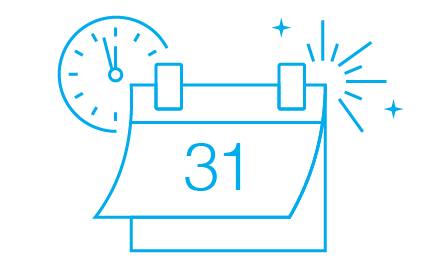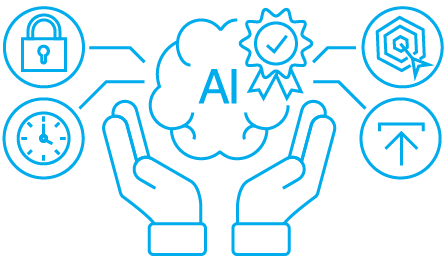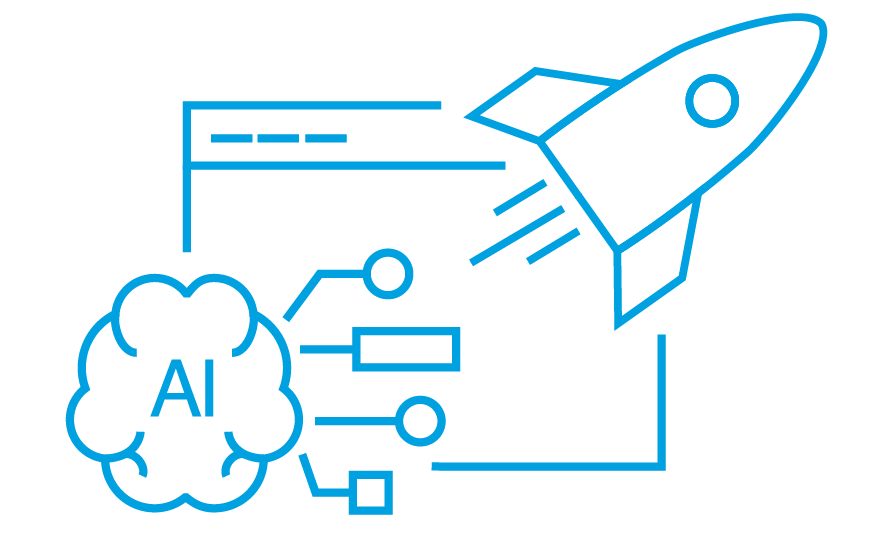- The Importance of Data in DSP Campaigns
- Types of Data Utilized in DSP Campaigns
- Impact of Data Quality on Campaign Success
- Data Segmentation: Tailor Your Campaigns for Maximum Impact
- Strategies for Optimizing Data Use in DSP Campaigns
- How to Improve the Success of Your Campaign?
In the realm of digital advertising, the success of a campaign is heavily dependent on the data that fuels it. The choice of data can significantly influence the targeting precision, relevance, and overall performance of your ads.
Demand-Side Platforms (DSPs) offer a robust environment for programmatic advertising, allowing advertisers to reach their desired audiences with unprecedented accuracy across various websites and platforms.
The Importance of Data in DSP Campaigns
Data serves as the backbone of programmatic advertising. It informs every aspect of a campaign, from audience segmentation to bid management and creative optimization. The right data can transform a mediocre campaign into a highly successful one by ensuring that ads are served to the right people at the right time.
Types of Data Utilized in DSP Campaigns
1. First-Party Data
First-party data is collected directly from your audience through interactions with your website, mobile app, or other owned channels. This data is highly valuable because it is unique to your business and provides insights into your customers’ behaviors, preferences, and purchase history.
2. Second-Party Data
Second-party data is essentially someone else’s first-party data. It can be obtained through partnerships with other companies that share their data in exchange for yours. This type of data can help you expand your reach by targeting similar audiences.
3. Third-Party Data
Third-party data is aggregated by data providers from various sources and sold to advertisers. It includes demographic, behavioral, and contextual data, enabling advertisers to target a wide range of audience segments.
Impact of Data Quality on Campaign Success
The quality of data directly influences the effectiveness of your targeting strategies. High-quality data is accurate, relevant, and up-to-date, ensuring that your ads are seen by the most receptive audiences. Conversely, poor-quality data can lead to wasted ad spend and lower campaign performance.
Data Segmentation: Tailor Your Campaigns for Maximum Impact
Effective data segmentation is crucial for targeting the right audience with the right message.
Here are some common data segmentation categories:
- Demographic Data
Demographic data includes information such as age, gender, income, education, and location and many others. This type of segmentation helps you understand the characteristics of your audience and tailor your messaging accordingly.
- Interest Data
Interest data delves into the lifestyle, values, and personality traits of consumers. By understanding what your audience is interested in, you can create more engaging and relevant ads.
- Intent Data
Behavioral data focuses on users’ actions, such as their browsing history, purchase behavior, and engagement with certain types of content. The data allows you to target users based on their past behaviors, increasing the likelihood of conversion.
- Brands Data
Brands data segments users based on their interactions and affinities with specific brands, allowing marketers to target consumers who have shown interest in or loyalty to particular brands.
- Events Data
Event data segments identify and group individuals based on their interest or likelihood to attend specific types of events, enabling organizers to refine their marketing strategies. For instance, by focusing on audiences who have shown interest in major events like the Super Bowl or UEFA matches.
Strategies for Optimizing Data Use in DSP Campaigns
Optimizing data use in Demand-Side Platform (DSP) campaigns is essential for achieving high performance and maximizing return on investment (ROI).
Make sure to follow these steps to achieve better results:
1. Enrich data by High-Quality Data Sources
Utilize OnAudience’s extensive database of high-quality, GDPR-compliant data to ensure your targeting is accurate and effective. If you are missing key information about your audience, integrate your first-party or other data with OnAudience data, so you can create a more comprehensive overview of your audience, improving targeting precision and campaign outcomes.
- Implement Advanced Audience Categories and Segments
Take advantage of sophisticated data segmentation tools to create highly targeted audience segments. Use demographic, interest, intent, brand, and event data to tailor your campaigns to specific audience niches. This granular approach allows for more personalized messaging and higher engagement rates.
- Create custom audience data sets
Build custom audience segments with the help of a data science team to maximize the precise targeting of your campaigns.
This approach will help you to:
- enhance targeting accuracy,
- enable personalized messaging,
- increase engagement rates,
- ultimately improve the effectiveness of DSP campaigns.
- Create a user journey map
Map your audience journey across multiple devices to understand and optimize engagements and conversions. OnAudience data makes it possible to get a comprehensive cross-device targeting by utilizing a vast database of identifiers and seeing where your target audience is most likely to interact with the ad.
- Cooperate with a data provider
Start to work with a data provider to significantly enhance the depth and breadth of your audience insights. Partnering with a trusted data provider like OnAudience allows you to access a wide array of high-quality, GDPR-compliant data, which can be seamlessly integrated with your own data sets.
Working with a data provider ensures that you have access to the latest data trends and technologies, keeping your marketing strategies innovative and competitive in an ever-evolving digital landscape. This strategic partnership not only enhances your DSP campaigns’ performance but also provides a solid foundation for long-term growth and customer engagement.
How to Improve the Success of Your Campaign?
In the competitive landscape of digital advertising, achieving campaign success requires strategic planning, data-driven decisions, and continuous optimization, check these tips to improve your campaigns:
1. Enhanced Targeting Accuracy
Leveraging high-quality, relevant data allows for the creation of precisely targeted audience segments. This ensures your ads reach users most likely to be interested in your products or services, boosting engagement and conversion rates.
- Example: An advertiser targeting young professionals interested in fitness can use demographic, interest, and behavioral data to increase relevance and engagement.
2. Personalized Messaging
Insights derived from data enable more personalized messaging, which is more likely to resonate with the audience compared to generic ads.
- Example: Utilizing intent history data, you can offer personalized recommendations, enhancing user experience and increasing conversion likelihood.
3. Optimized Campaign Performance
Real-time performance metrics and data allow for continuous campaign optimization. Adjustments to targeting, bids, and creative elements can be made based on data insights to enhance performance.
- Example: DSPs provide real-time data on impressions, clicks, and conversions, allowing advertisers to refine strategies for improved ROI.
4. Improved Audience Insights
Combining own data with other high-quality data from a reliable data provider allows a deeper understanding of audience behavior and preferences, aiding in the creation of more effective campaigns.
- Example: Insights from a DSP can reveal peak activity times for your target audience, enabling you to schedule ads for maximum impact.
5. Centralized Campaign Management
A DSP allows for the management of all digital campaigns from a single platform, saving time and providing a unified view of performance across channels.
- Example: Using a DSP, advertisers can integrate campaigns across mobile, desktop, DOOH, and connected TV, ensuring consistent messaging and improved effectiveness.
Implementing these strategies can significantly enhance the success of your digital advertising campaigns, leading to higher engagement, better performance, and optimized ROI.



